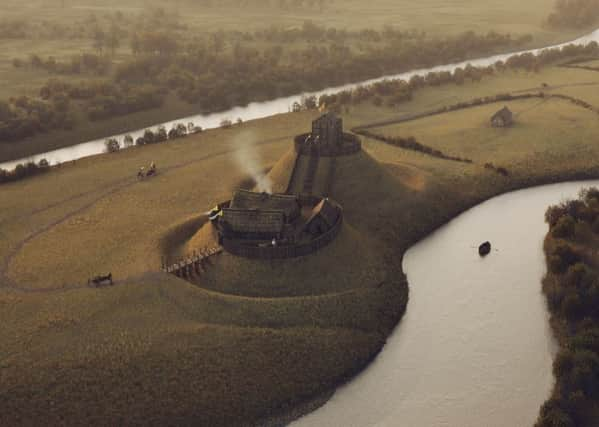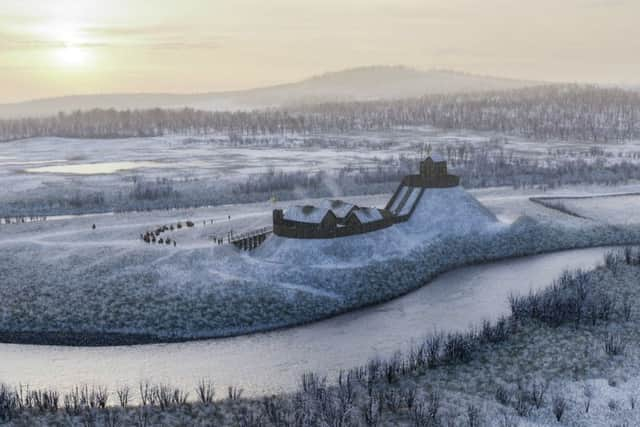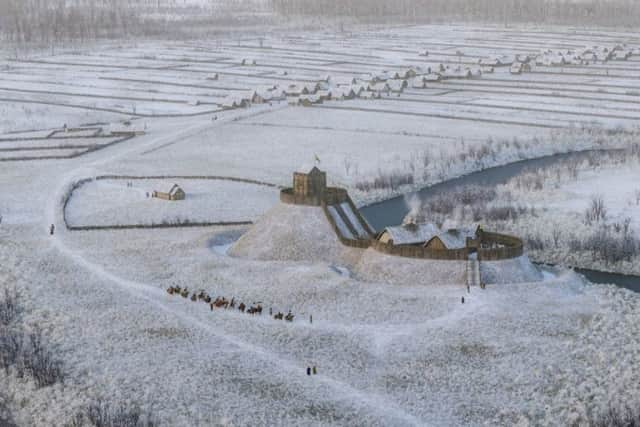Scottish castle linked to Robert the Bruce digitally rebuilt


The Bass of Inverurie has been digitally rebuilt by artist and illustrator Bob Marshall, who grew up close to the remains of the pile in the north east of Scotland.
Mr Marshall said he wanted to “shine a limelight back on some of our earliest castles” with the visual interpretation.
Advertisement
Hide AdAdvertisement
Hide AdThe Bass of Inverurie is the only castle in this part of the North East to take the classic motte and bailey form with the pile the administrative centre of the earldom of Garioch during the late 12th and early 13th centuries.


A graveyard now surrounds the remains.
The Bass was probably built for Earl David of Huntingdon and Garioch, the younger brother of King William of Scots.
The castle was inherited by the earl’s son, John, with one of his sisters, Isobel, marrying Robert the Bruce, the 4th Lord of Annandale.


The couple’s grandson was Robert the Bruce, King of Scots.
The Bass of Inverurie was given to the Bruce family sometime after 1237.
Advertisement
Hide AdAdvertisement
Hide AdMr Marshall said it “disappears” from history at the end of the 13th or early 14th Century although some believe it may have sheltered a sick Robert the Bruce who fell ill around the time of the Battle of Inverurie in 1308.
He added: “The illness which the Bruce succumbed to during the battle of Inverurie is a mystery, although he obviously manages to make a full recovery.


“In the battle, the Bruce defeated his chief domestic enemy John Comyn, the Third Earl of Buchan and the outcome produced a significant shift in the balance of power in Scotland.
“The Bruce may have taken refuge at the Bass, perhaps the moated castle at Caskieben, or with his army which was camped at Oldmeldrum.
Advertisement
Hide AdAdvertisement
Hide Ad“However, there is no mention of Inverurie Castle. It is possible that the castle had already been dismantled or slighted to prevent it from coming under control of Bruce’s enemies.”
Mr Marshall said there were several challenges to producing the reconstruction, not least because there is no reliable pictorial or documentary evidence describing the construction of pre 13th Century castles.


He added: “Producing an accurate reconstruction of the Bass of Inverurie is made more difficult by our understanding that Scotland’s earliest castles tend to re-use the features of earlier Celtic fortresses.”
“The rate at which the Norman way of life spread throughout Scotland is a much slower affair than in the regions of England and Wales. So, exactly how much the Bass of Inverurie drew from both Norman and Celtic influences,is hard to determine.
Advertisement
Hide AdAdvertisement
Hide Ad“In the absence of enough evidence, I have attempted to blend a measure of both influences in
my reconstruction, although I have leant more towards the classic Norman motte-and-bailey castle form than to that of a Celtic fortress in respect of its Royal charter.”
